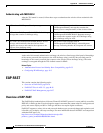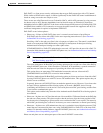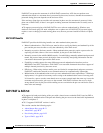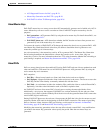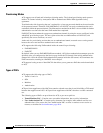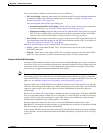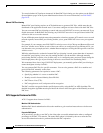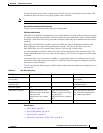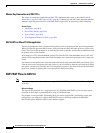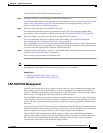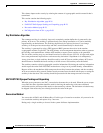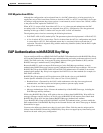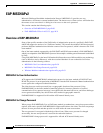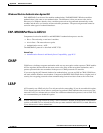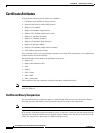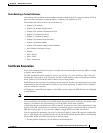
B-26
User Guide for Cisco Secure Access Control System 5.3
OL-24201-01
Appendix B Authentication in ACS 5.3
EAP-FAST
Master Key Generation and PAC TTLs
The values for master key generation and PAC TTLs determine their states, as described in About
Master-Keys, page B-21 and Types of PACs, page B-22. Master key and PAC states determine whether
someone requesting network access with EAP-FAST requires PAC provisioning or PAC refreshing.
Related Topics
• About PACs, page B-21
• Provisioning Modes, page B-22
• Types of PACs, page B-22
• ACS-Supported Features for PACs, page B-24
EAP-FAST for Allow TLS Renegotiation
You may be prompted to enter a password twice when you use an anonymous PAC provisioning schema.
When you enter the password the first time, ACS provisions the PAC and sends an access-reject to the
client. The client is then prompted to re-enter the password so that they will be able to authenticate and
be granted access to the network.
ACS checks for a TLS client handshake record. If it finds the TLS client handshake record, ACS will
initiate a TLS renegotiation at the end of EAP-Fast phase zero, instead of rejecting the user’s request for
access.
You should use this option with a Vista client when the host is using anonymous PAC provisioning. Vista
client do not save the user password in the cache, so you are allowed to enter the password once. When
this option is enabled, ACS initiates the TLS renegotiation request to the client at the end of EAP-FAST
phase zero, instead of rejecting the access attempt after PAC provisioning.
EAP-FAST Flow in ACS 5.3.
Note You must configure the end-user clients to support EAP-FAST. This procedure is specific to configuring
ACS only.
Before You Begin
The steps in this procedure are a suggested order only. Enabling EAP-FAST at your site may require
recursion of these steps or performing these steps in a different order.
For example, in this procedure, determining how you want to support PAC provisioning comes after
configuring a user database to support EAP-FAST; however, choosing Automatic In-Band PAC
Provisioning places different limits on user database support.



